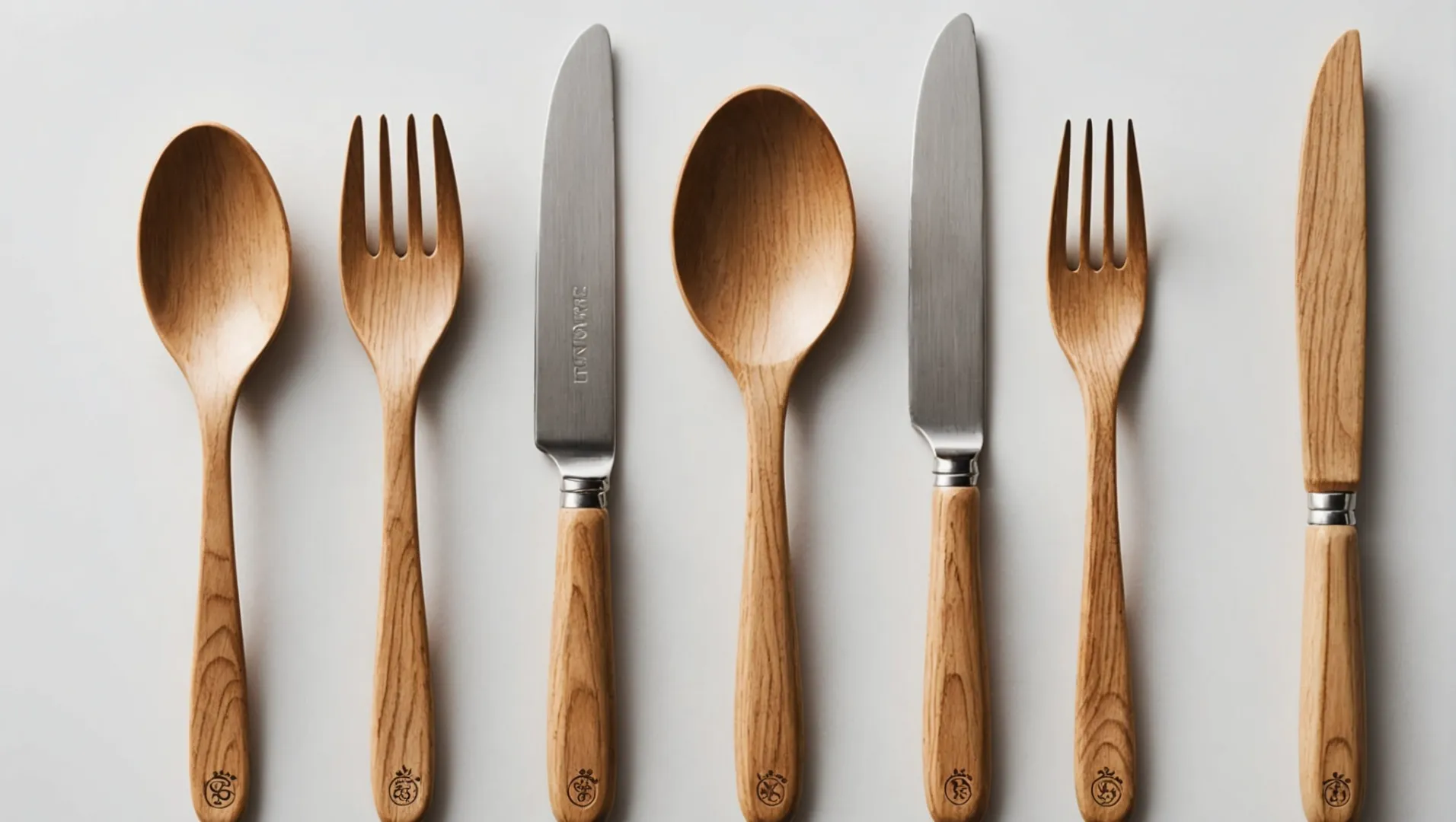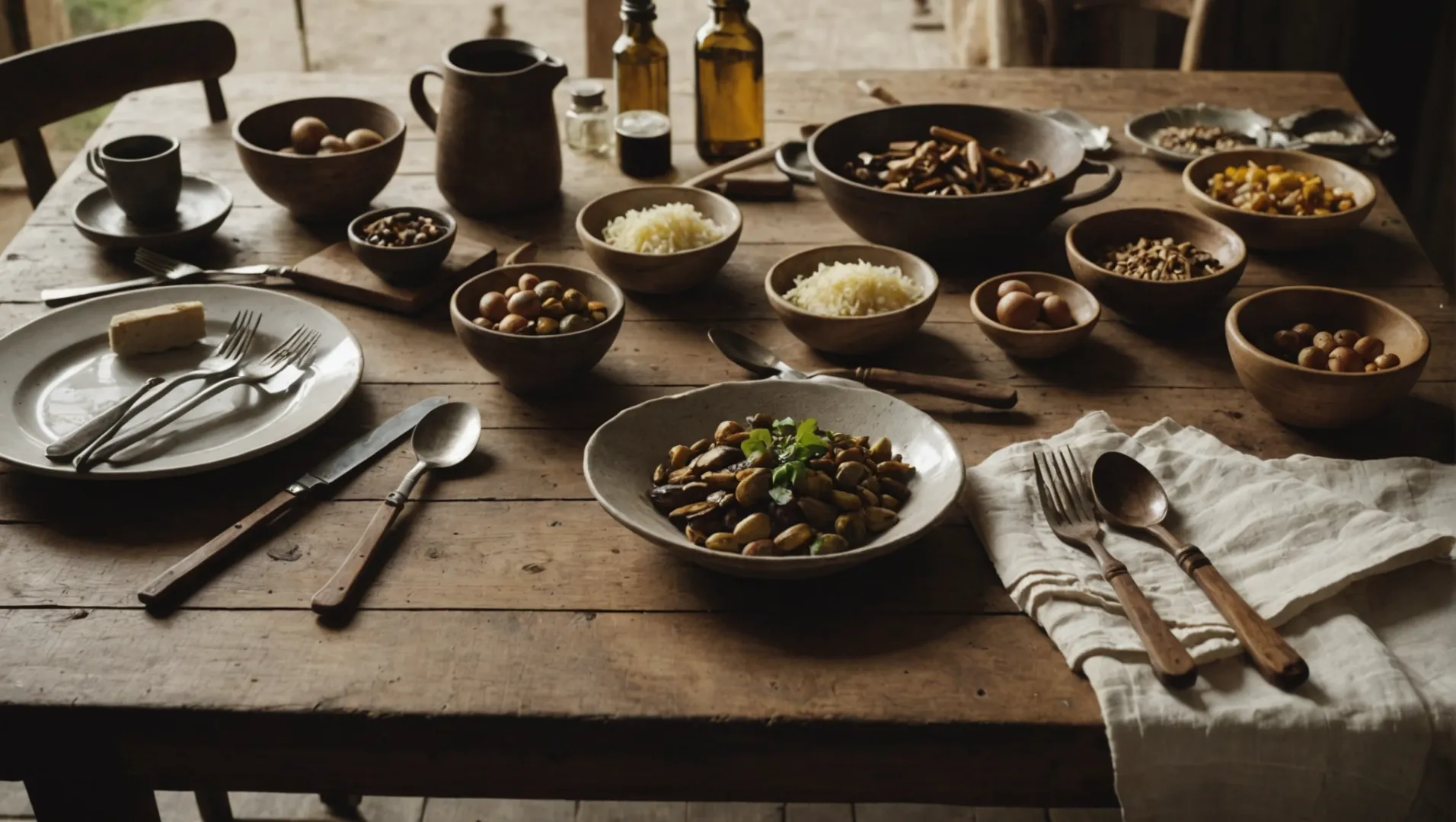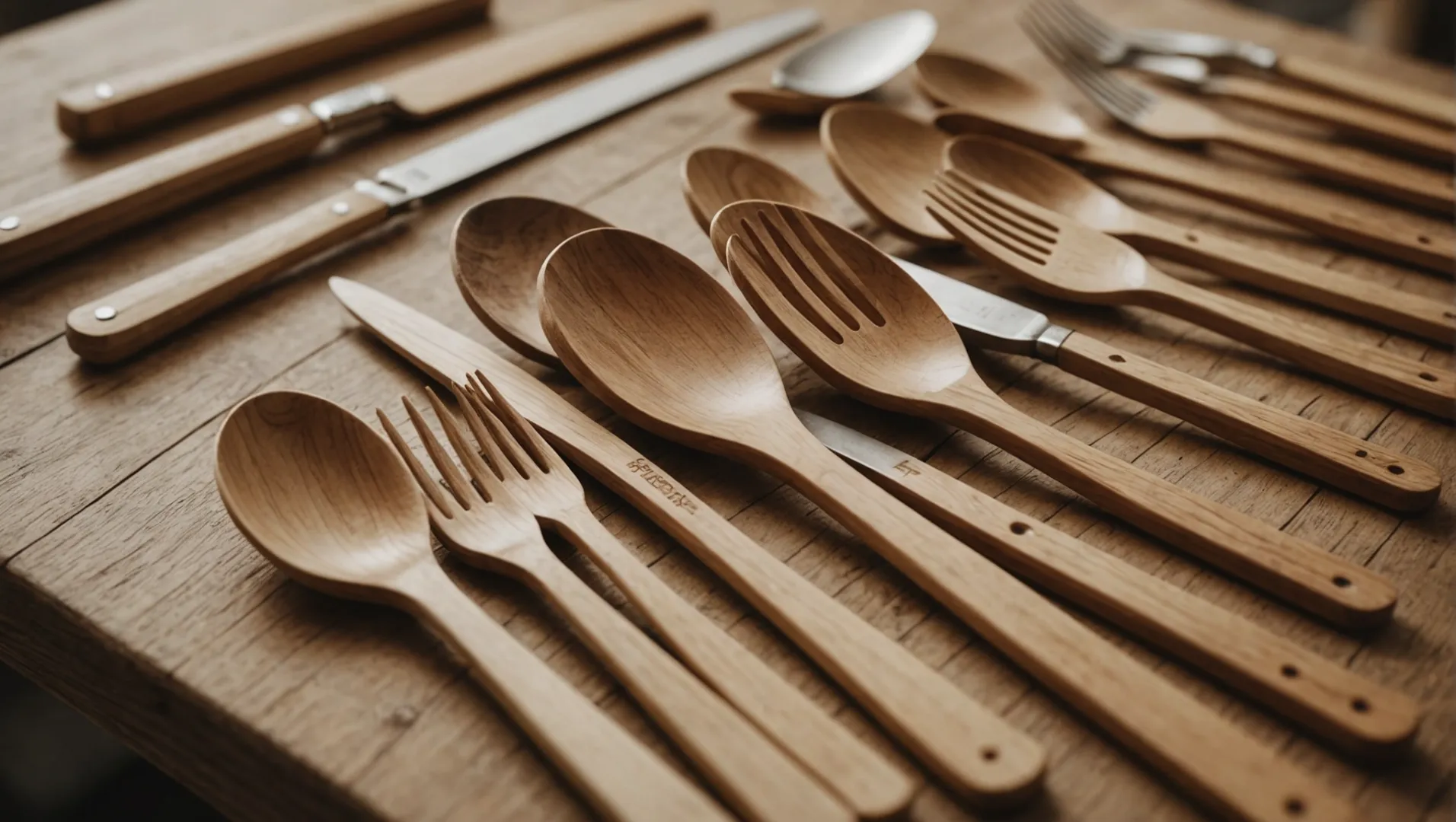
Navigating the international market for wooden cutlery can feel like sailing through uncharted waters. Understanding complex environmental and safety standards is not just necessary; it’s essential for success.
To export wooden cutlery internationally, compliance with ISPM 15 is essential. This regulation mandates treatment and certification of wood packaging to prevent pest infestation. Ensuring adherence to these standards is crucial for smooth international trade operations.
But there's more to it than just ISPM 15 compliance. There are various environmental certifications and treatment methods that can affect product quality and market acceptance. Keep reading as we dive deeper into these vital aspects!
ISPM 15 mandates heat treatment for wooden cutlery packaging.True
ISPM 15 requires wood packaging to be heat-treated to prevent pest infestation.
How Does ISPM 15 Regulation Impact Wooden Cutlery Exportation?
ISPM 15 plays a crucial role in the exportation of wooden cutlery by preventing pest infestations.
ISPM 15 requires wooden packaging materials, like pallets and crates, used in international trade to be treated to prevent the spread of pests. This regulation affects wooden cutlery exportation by ensuring that packaging is compliant, thereby avoiding trade disruptions and maintaining market access.

Understanding ISPM 15
The International Standards for Phytosanitary Measures No. 15 (ISPM 15) was implemented by the International Plant Protection Convention (IPPC) to prevent the spread of pests and diseases through wood packaging materials (WPM) in international trade. This regulation mandates that all WPM, including pallets and crates, be treated either by heat treatment or fumigation with methyl bromide to eliminate pests.
For wooden cutlery exporters1, adhering to ISPM 15 is essential. The regulation ensures that the wood used in packaging does not harbor harmful pests that could affect ecosystems in importing countries. Non-compliance can lead to delays at customs, penalties, or even refusal of entry, which can disrupt supply chains and affect business reputation.
Treatment Methods and Marking Requirements
There are two primary treatment methods under ISPM 15:
- Heat Treatment (HT): Wood must be heated to a minimum core temperature of 56°C for at least 30 minutes.
- Fumigation with Methyl Bromide (MB): Wood is fumigated with methyl bromide, a process that involves specific concentrations and exposure times.
Once treated, wood packaging must be marked with a specific ISPM 15 stamp that includes the IPPC logo, the country code, treatment method code (HT or MB), and a unique treatment facility code.
Impact on Export Operations
Compliance with ISPM 15 is particularly significant for countries importing goods from regions known for specific pest risks. For instance, exporting wooden cutlery to North America2 requires strict adherence to ISPM 15, as these countries have stringent measures to protect their native ecosystems.
Additionally, exporters must maintain meticulous records of the treatment and marking processes to avoid disputes or inspections during transit. Proper compliance not only facilitates smoother customs clearance but also instills confidence in buyers regarding the quality and safety of the product.
Challenges and Opportunities
One of the challenges exporters face is the cost associated with treatment and certification. However, this can be mitigated by integrating sustainable practices such as sourcing wood that inherently meets phytosanitary standards or investing in reusable WPM that can be treated once and used multiple times.
Moreover, businesses that effectively navigate ISPM 15 regulations may find opportunities in expanding their markets. For instance, environmentally conscious consumers and retailers are increasingly favoring products that adhere to international standards, presenting an edge for compliant companies in competitive markets.
Adherence to ISPM 15 not only ensures regulatory compliance but also supports global efforts in biodiversity conservation. By preventing the spread of invasive species, businesses contribute positively to environmental sustainability, aligning with broader corporate social responsibility goals.
ISPM 15 applies only to wooden packaging, not cutlery.False
ISPM 15 affects wooden cutlery indirectly through packaging compliance.
Non-compliance with ISPM 15 can lead to customs delays.True
Failure to comply with ISPM 15 may result in trade disruptions.
What Are the Best Practices for Maintaining Wooden Cutlery Quality?
Preserving the quality of wooden cutlery requires mindful care to extend its longevity and maintain hygiene.
To maintain wooden cutlery quality, regularly apply food-safe oils, avoid prolonged water exposure, and store properly. These practices prevent cracking and bacterial growth, enhancing durability.

Regular Conditioning with Food-Safe Oils
One of the simplest yet most effective ways to maintain the quality of wooden cutlery is by regularly conditioning them with food-safe oils, such as mineral oil or beeswax. These oils help to seal the wood, preventing moisture absorption that can lead to warping or cracking. Applying a thin layer of oil every few weeks can preserve the wood’s natural beauty and integrity.
To apply, simply rub a small amount of oil onto the cutlery with a soft cloth, allowing it to soak in overnight. Wipe off any excess oil the next day. This process not only maintains the utensil's sheen but also provides an additional barrier against bacteria. Learn more about conditioning techniques3.
Avoid Prolonged Water Exposure
Wooden cutlery should never be left soaking in water or washed in a dishwasher. Excessive water exposure can cause wood to swell and crack. Instead, wash your utensils by hand using mild soap and warm water. After cleaning, dry them immediately with a towel to prevent moisture retention, which could otherwise lead to bacterial growth.
It’s also wise to avoid placing wooden utensils near heat sources or under direct sunlight as these conditions can dry out the wood, making it brittle over time.
Proper Storage Solutions
Storing wooden cutlery correctly is crucial in prolonging its life span. Ensure they are stored in a dry environment, away from humidity. Consider using a utensil holder that allows for air circulation, or place them in a drawer lined with a soft cloth to prevent scratches.
Organizing your cutlery by size or type can also minimize unnecessary wear. Using dedicated storage solutions keeps them from being jostled around, which can cause damage over time.
Emphasize Sustainable Practices
When maintaining wooden cutlery, it's important to support sustainable practices. Choose utensils made from responsibly sourced materials and coated with natural finishes. Look for certifications like FSC (Forest Stewardship Council) which indicate environmentally friendly sourcing.
By following these best practices, not only do you ensure the longevity and functionality of your wooden cutlery, but you also contribute to a more sustainable lifestyle. Discover sustainable wooden cutlery options4.
Food-safe oils prevent wooden cutlery from cracking.True
Regular application of food-safe oils seals wood, preventing moisture absorption.
Wooden cutlery can be washed in a dishwasher safely.False
Dishwashers expose wooden cutlery to excessive water, causing swelling and cracking.
Which Environmental Certifications Should Exporters Consider?
Exporters of wooden cutlery need to prioritize eco-certifications to meet global sustainability standards.
Exporters should consider FSC, PEFC, and Cradle to Cradle certifications for their wooden cutlery. These certifications ensure responsible sourcing, environmental friendliness, and lifecycle sustainability, crucial for accessing international markets.

The Importance of Eco-Certifications for Wooden Cutlery
In today's global market, environmental certifications are more than just a badge of honor—they're essential for credibility and compliance. Consumers and regulators alike demand proof that products like wooden cutlery meet rigorous environmental standards. Eco-certifications5 help assure stakeholders that your products are sustainably sourced and environmentally friendly.
Key Certifications to Consider
-
FSC Certification
The Forest Stewardship Council (FSC) certification is a globally recognized standard that ensures the wood used is sourced from responsibly managed forests. This certification is critical for exporters aiming to meet the expectations of environmentally conscious consumers.
-
PEFC Certification
Similar to FSC, the Programme for the Endorsement of Forest Certification (PEFC) focuses on promoting sustainable forest management through independent third-party certification. It provides assurance that the wood products are derived from forests managed in accordance with strict environmental, social, and economic standards.
-
Cradle to Cradle Certification
This certification evaluates a product’s sustainability across its entire lifecycle, from production to disposal. It assesses safety, circularity, and responsibility, making it an excellent choice for companies looking to position themselves as leaders in sustainability.
| Certification | Focus | Benefits |
|---|---|---|
| FSC | Responsible forest management | Increases market access and consumer trust |
| PEFC | Sustainable forest management | Provides global recognition and competitive advantage |
| Cradle to Cradle | Lifecycle sustainability assessment | Enhances product value through comprehensive evaluation |
Understanding the Certification Process
Each certification has its own criteria and process. For example, FSC certification requires an assessment of forest management practices against established principles and criteria. PEFC involves an endorsement process that evaluates national standards. Exporters should familiarize themselves with these processes to ensure compliance.
Leveraging Certifications for Market Access
Holding the right environmental certifications can significantly enhance a company's ability to enter and compete in international markets. Certifications serve as proof of sustainability credentials, which is increasingly important as regulations tighten around the world. Lifecycle Analysis6 data, often part of these certifications, can provide additional insights into resource use and emissions, helping to further demonstrate commitment to sustainability.
FSC certification ensures responsible forest management.True
FSC certification verifies that wood is sourced from responsibly managed forests.
Cradle to Cradle focuses only on sourcing sustainability.False
Cradle to Cradle evaluates sustainability across a product's entire lifecycle.
How Can Exporters Ensure Sustainability in Wooden Cutlery Production?
Sustainability in wooden cutlery production is pivotal for eco-conscious exporters and consumers alike.
Exporters can ensure sustainability by sourcing wood responsibly, using natural coatings, and obtaining eco-certifications such as FSC. Emphasizing lifecycle analysis and consumer education further enhances sustainable practices.

Responsible Sourcing of Wood
The foundation of sustainable wooden cutlery production lies in sourcing materials responsibly. Exporters should prioritize wood from responsibly managed forests7, ensuring minimal impact on biodiversity and maintaining ecological balance. Certifications such as the Forest Stewardship Council (FSC) label provide assurance of sustainable sourcing.
Utilizing Natural Coatings
To enhance the durability and hygiene of wooden cutlery, manufacturers often apply natural coatings like beeswax or plant oils. These coatings not only protect against moisture absorption but also improve the utensil's lifespan. Regular reconditioning with oils can prevent cracking and maintain the product's integrity over time.
Obtaining Eco-Certifications
Eco-certifications are crucial for establishing credibility in environmentally conscious markets. Besides FSC, certifications like FDA and LFGB confirm that the products are safe for food contact. Adhering to these standards helps exporters meet international market requirements and assures consumers of the product's safety and sustainability.
Implementing Life Cycle Analysis
Life Cycle Analysis (LCA) is an effective tool for evaluating the environmental impact of wooden cutlery from production to disposal. By assessing energy and resource usage, companies can optimize processes, reduce waste, and enhance their environmental performance. Adopting LCA not only supports sustainability but also offers a competitive edge in markets with stringent environmental regulations.
Educating Consumers on Maintenance
Consumer education plays a pivotal role in extending the life of wooden cutlery and maintaining its sustainability. Providing guidelines on proper cleaning, oiling, and storage can significantly enhance product longevity. Encouraging consumers to recondition utensils8 with oils will help maintain both their aesthetic appeal and functional performance.
| Key Sustainability Practices | Benefits |
|---|---|
| Responsible sourcing | Reduces environmental impact |
| Natural coatings | Enhances durability and safety |
| Eco-certifications | Builds market credibility |
| Life Cycle Analysis | Optimizes environmental performance |
| Consumer education | Prolongs product lifespan |
By integrating these practices, exporters can not only contribute to environmental sustainability but also meet the growing demand for eco-friendly products in global markets.
FSC certification ensures sustainable wood sourcing.True
FSC certification verifies responsible forestry practices, crucial for sustainability.
Natural coatings like beeswax reduce cutlery durability.False
Natural coatings enhance durability by protecting against moisture and wear.
Conclusion
Complying with international standards not only ensures regulatory adherence but also enhances the sustainability and market success of wooden cutlery exporters.
-
Learn how ISPM 15 affects your wooden cutlery export business.: Requirements for specific wood packaging material declarations in addition to existing import documentation may severely impact trade and reduce the utility of ... ↩
-
Understand North American regulations for exporting wooden cutlery.: Many U.S. trading partners require ISPM 15 compliance for wood packaging material (WPM) used to ship commodities. ↩
-
Explore step-by-step guides for effective conditioning methods.: The oil you use for your wooden cutting boards and utensils should be food grade and not prone to rancidity. Mineral oil is an inexpensive and popular choice. ↩
-
Find eco-friendly cutlery options that support sustainability goals.: Compostable cutlery made from PLANT BASED materials. World Centric Cutlery and natural Birch wood cutlery. Free Shipping over $89. ↩
-
Explore how eco-certifications enhance product credibility and market access.: 1. Insulation / Cost Savings · 2. Positive Community Relationships · 3. Access to Green Building Projects · 4. Environmental Benefits · 5. A ... ↩
-
Learn how Lifecycle Analysis supports sustainable practices in production.: A Life Cycle Assessment (LCA) calculates the environmental impact of products or services throughout their entire lifecycle. ↩
-
FSC certification ensures responsible wood sourcing, vital for sustainable production.: FSC certification ensures that products come from responsibly managed forests that provide environmental, social and economic benefits. ↩
-
Oiling prevents cracking and extends cutlery lifespan, enhancing sustainability.: Oiling regularly keeps wood from drying out, which causes the kind of cracking and splintering that can relegate it to the trash. It also brings ... ↩

